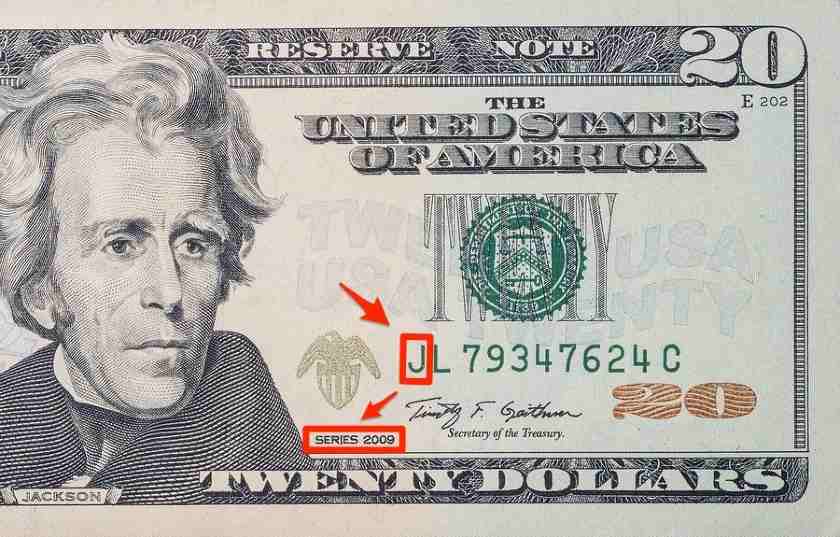

Notes numbering 00000002 and on up are worth less, but all the way through 00000100 they can sell for hundreds of dollars (with only a small premium for a $100 bill over a $20 note-since for collectors, the numbers that really count are the tiny ones). The low digits are therefore exceptionally rare this year. The print runs don’t always start with 00000001-in the first six months of this year, only 11 “00000001” notes have been printed in any denomination, because the Bureau of Engraving and Printing has decided for technical reasons to start the print runs with a higher number.

A $2 bill numbered 0000001 with a star - the star indicates a replacement for a misprint, but the note does not carry the same serial number as the original - sold in May 2009 for $29,900.

A $20 bill that was first off the press in a 2009 run sold in April for $5,581. The simplest fancy numbers are the early ones: The redesigned $100 note with serial number 00000001 is likely to fetch $10,000 to $15,000, according to Dustin Johnston, director of currency for Heritage Auctions in Dallas. One or two capital letters precede the number to designate which Federal Reserve bank is issuing it, and to mark which numerical series, usually starting with A, the note belongs to.
2013 $20 DOLLAR BILL SERIAL NUMBER LOOKUP VALUE SERIAL NUMBERS
The serial numbers get stamped onto the bills in order, starting as low as 00000001, and go up one at a time to a maximum of 99999999 (although they don’t always reach that high). The US government has not always used eight digits when numbering bank notes.


 0 kommentar(er)
0 kommentar(er)
